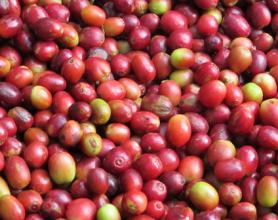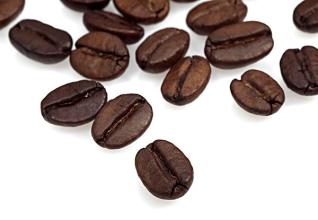The second Cross-Strait Fine Coffee City Forum is finally waiting for you.
According to the latest research report, China has become the fastest growing market for coffee consumption in the world for several years in a row, with an annual growth rate of about 15-20%, and is likely to become the core area affecting coffee prices and production in the future. Teacher Han also mentioned in the sharing that the annual sales of coffee in China is only 110000 tons, with less than 100g per capita, with an annual growth rate of 16%. After 10-16 years, it will exceed 1 kg per person, multiplied by 1.4 billion people, and in the next 20 years, annual sales of coffee will reach 1.4 million tons. So what does this 1.4 million tons mean? From the perspective of the United States, the United States is the largest consumer of coffee in the world, with annual sales of 1.4 million tons, followed by Brazil, with annual sales of 1.22 million tons. The mainland has become one of the top three coffee consumers in the world within 20 years. Coffee has also been vigorously promoted in China in the past year or two, such as Yunnan Coffee Trading Center, Chongqing Coffee Trading Center and Shanghai Coffee Trading Center, so the domestic coffee market is very large in 20 years. Now thousands of local coffee brands have emerged in China, competing with international giants for Mianli Coffee, a creative industry platform enterprise based on boutique coffee, and many friends come to the store. You don't even know what boutique coffee is? What is boutique coffee, everyone has different opinions. Teacher Han thinks that boutique coffee is very simple, that is, clean, flawless, delicious coffee, as simple as that. He also mentioned that a coffee expert in Hawaii believes that boutique coffee is a brewing process, the whole brewing process is very exquisite, every link is strictly controlled, and the production is fine coffee. It can be seen that the definition of fine coffee in the coffee industry is also different, leaving us a lot of room for free imagination, which is very interesting. In cotton, brew a cup of hand-brewed coffee full of ritual, from weighing beans to grinding, then brewing the coffee according to the best proportion of gouache, watching the coffee liquid dripping slowly, smelling the aroma of coffee in the air, fascinating; taste the coffee, experience or fruit acid or caramel rich flavor, the day begins. First, people's attention gradually develops from the lower reaches of the coffee industry chain to the upstream, paying more attention to the origin of coffee. Coffee industry chain is divided into upstream, middle reaches and downstream, upstream refers to coffee farmers, planting areas, manors, processing plants, etc., the middle reaches is the logistics end, trading center, import and export, bean hunter. Downstream is the consumer side, that is, bakeries, cafes, or cafes with baking functions. You will find that the upstream, midstream and downstream have the lowest profit and the highest risk, but the coffee World Cup matches are all consumer-side games, all concentrated in the downstream side. On the upstream side, however, there is no competition for coffee farmers. If coffee farmers can't grow good coffee, even world champion roasters and world coffee champions are useless. There is something wrong with the upstream production end, and the downstream consumer side is also unable to make good coffee. After the rise of the third wave of coffee, looking back at the origin of coffee, you will find that many baristas like to go to the place of origin, and coffee farmers have more knowledge. The current trend is moving to the producing area, which is the mother of all flavors, and the cornerstone of fine coffee is still coffee growers. Mr. Han also suggested that young baristas can spend some time running in the producing areas and have a wider field of vision. the current trend is to go back to the origin to recharge. Wu Zelin of Taiwan, winner of the 2016 World Barista Competition, took several months to find the beans at the Panamanian manor, as did previous champions. The story of you running to the manor and looking for beans will impress the judges and give you extra points.

Important Notice :
前街咖啡 FrontStreet Coffee has moved to new addredd:
FrontStreet Coffee Address: 315,Donghua East Road,GuangZhou
Tel:020 38364473
- Prev

Cappuccino coffee cup capacity-how large is the coffee cup
Cappuccino coffee cup capacity-how much coffee cup A. Espresso is a 1-ounce (30mL5mL) drink made from ground coffee powder and must be extracted from a two-headed hand. b. Coffee beans are products that are processed and roasted from the fruits of various coffee trees. c. Coffee beans are not allowed to have any additives, seasonings or dyeing.
- Next

Step by step Gaomeixi Xintiandi Coffee Culture Festival will kick off this week
2017 World baristas Competition Changsha Division and step by step Gaomeixi Xintiandi Coffee Culture Festival November 25 to November 27, 2016, Changsha coffee industry will usher in the world-class professional competition WBC World baristas Competition China trials Changsha division, coffee experts from all walks of life against Meixi Xintiandi, with a strong lineup of judges led by Huang Junhao, Taiwan's first COE judge, gathered in Changsha, Hunan for the first time.
Related
- Beginners will see the "Coffee pull flower" guide!
- What is the difference between ice blog purified milk and ordinary milk coffee?
- Why is the Philippines the largest producer of crops in Liberia?
- For coffee extraction, should the fine powder be retained?
- How does extracted espresso fill pressed powder? How much strength does it take to press the powder?
- How to make jasmine cold extract coffee? Is the jasmine + latte good?
- Will this little toy really make the coffee taste better? How does Lily Drip affect coffee extraction?
- Will the action of slapping the filter cup also affect coffee extraction?
- What's the difference between powder-to-water ratio and powder-to-liquid ratio?
- What is the Ethiopian local species? What does it have to do with Heirloom native species?

